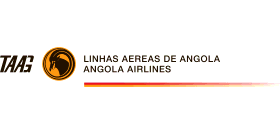 TAAG’s A220 Arrival Boosts Africa Connectivity
TAAG’s A220 Arrival Boosts Africa Connectivity
TAAG Angola Airlines has welcomed its third Airbus A220-300, marking a significant step in the airline’s ambitious modernization and expansion strategy. The new aircraft, named D2-TAI, touched down at Luanda’s Dr. António Agostinho Neto International Airport, arriving from Montreal, Canada, with a brief technical stop in Faro, Portugal.
This latest addition strengthens TAAG’s commitment to enhancing regional connectivity within Africa and solidifying its position as a key player in the continent’s evolving aviation landscape. The A220-300’s arrival is a cornerstone of TAAG’s 2024-2029 Strategic Plan, which focuses on optimizing operations, boosting profitability, and transforming the airline into a leading force in African aviation.
The A220-300 is renowned for its versatility, fuel efficiency, and reduced environmental impact. It offers a modern, comfortable cabin configured to accommodate 137 passengers, with 12 seats in Business Class, 35 in Premium Economy, and 90 in Economy. This configuration caters to the diverse needs of today’s travelers, providing a premium experience for business passengers and a comfortable, efficient option for leisure travelers.
For African travel agents, TAAG’s growing fleet of A220-300s presents exciting new opportunities. The aircraft’s enhanced efficiency and range open doors to new routes and improved connectivity across the continent. This expansion allows agents to curate more diverse and appealing itineraries for their clients, connecting them to a wider range of destinations with greater ease and comfort.
TAAG’s investment in the A220-300 is not merely about fleet renewal; it’s about transforming the passenger experience. The aircraft’s modern cabin, featuring wider seats, larger windows, and quieter operation, sets a new standard for comfort in regional travel. This enhanced passenger experience strengthens TAAG’s brand appeal and positions it as a preferred choice for discerning travelers.
The airline’s strategic decision to embrace the A220-300 aligns with the broader trends shaping the African aviation market. As demand for air travel continues to rise across the continent, airlines are seeking fuel-efficient, versatile aircraft that can operate from a variety of airports, including those with shorter runways. The A220-300’s capabilities make it ideally suited to meet these evolving needs, enabling TAAG to expand its reach and serve a wider range of destinations.
TAAG’s fleet modernization program extends beyond the A220-300. The airline is also incorporating Boeing 787 Dreamliners into its long-haul fleet, further enhancing its capacity and reach. This strategic combination of modern, efficient aircraft positions TAAG for continued growth and reinforces its commitment to providing seamless connectivity within Africa and beyond.
The arrival of the third A220-300 is more than just a fleet upgrade; it’s a symbol of TAAG’s transformation. It represents the airline’s dedication to providing a superior travel experience, enhancing regional connectivity, and contributing to the growth of Africa’s dynamic aviation sector. This commitment to innovation and passenger satisfaction positions TAAG as a valuable partner for African travel agents and a driving force in the continent’s travel industry.
The introduction of the A220-300 is expected to yield significant capacity and efficiency gains for TAAG. Initial projections based on the current three-aircraft deployment suggest a 14.2% increase in capacity compared to the Boeing 737-700s being replaced. Furthermore, the A220-300 boasts a 25% improvement in fuel efficiency per seat, leading to substantial cost savings and a reduced environmental footprint.
Looking ahead, TAAG plans to expand its A220-300 fleet to up to 15 aircraft, further amplifying these benefits. This expansion will not only enhance capacity and efficiency but also unlock new route possibilities and strengthen TAAG’s network across Africa. The airline’s strategic focus on modernization and regional connectivity positions it as a key player in the continent’s evolving aviation landscape.
